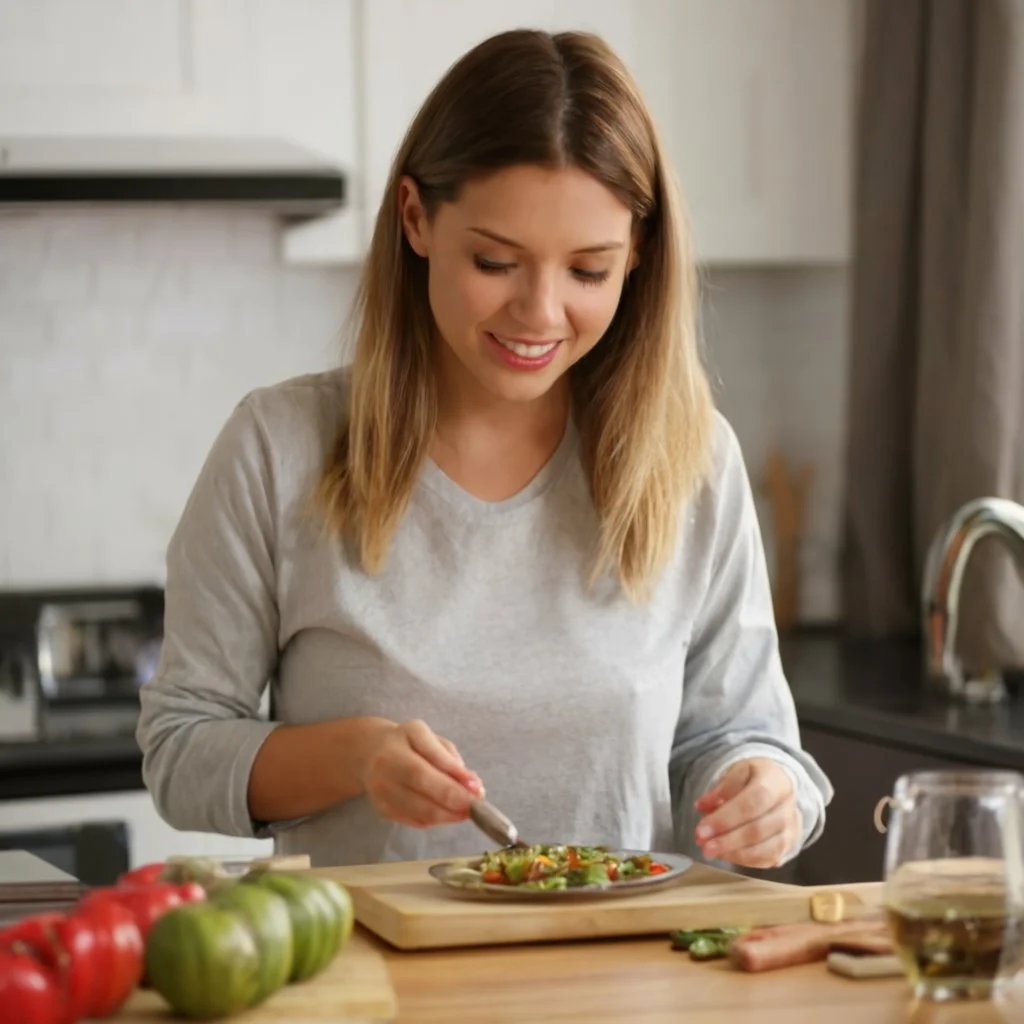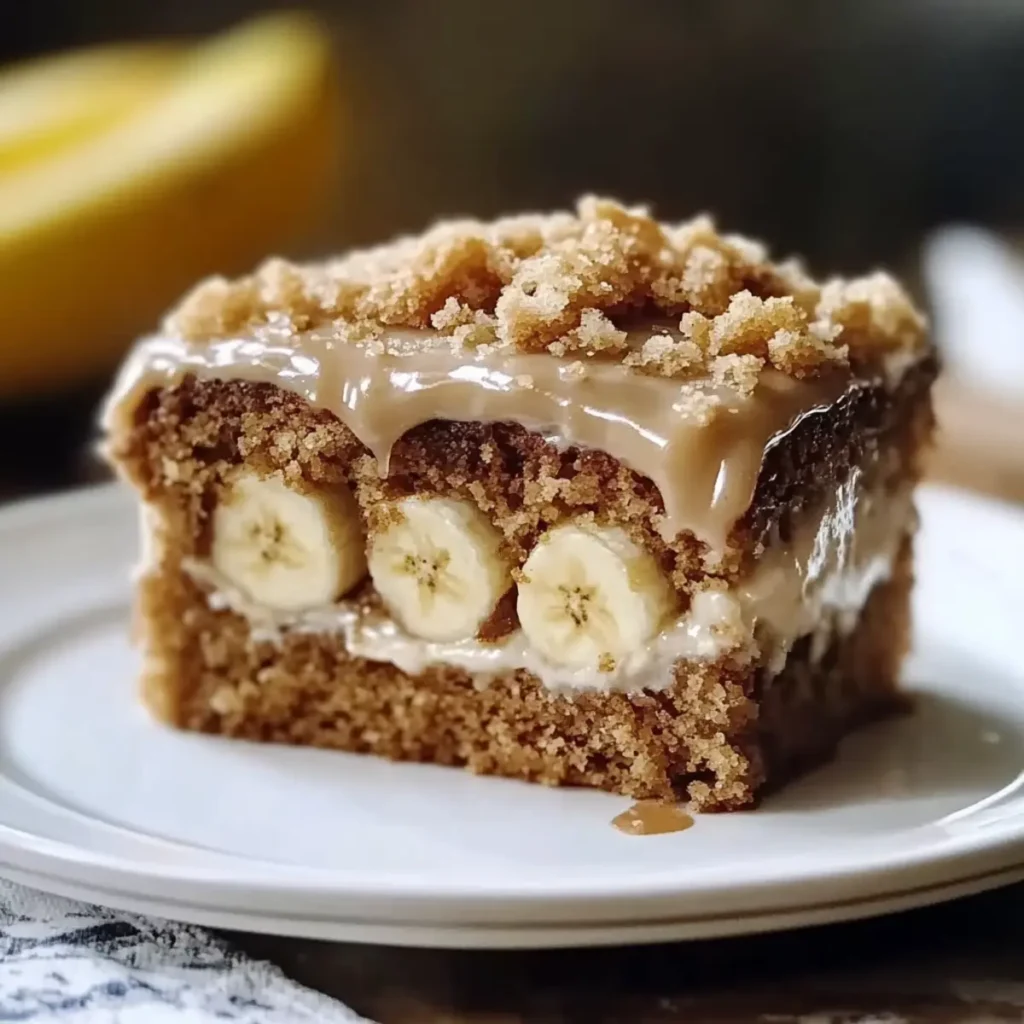Embarking on a culinary journey with a sourdough dinner rolls recipe is like unlocking the secrets of traditional baking, where simplicity meets sophistication. Sourdough, with its rich history and unique fermentation process, brings a depth of flavor and texture to bread that is unmatched. These dinner rolls, light and airy with a subtle tang, are not just a side dish but a showstopper in their own right.
In this Sourdough Dinner Rolls Recipe, we harness the power of a natural sourdough starter, a simple yet magical blend of flour and water, fermented to perfection. The result is dinner rolls that are not only delicious but also a testament to the art of sourdough baking. Whether you’re a seasoned baker or new to the world of sourdough, this recipe offers an opportunity to create something truly special – rolls that are as delightful to the senses as they are nourishing.
So, let’s dive into the world of sourdough dinner rolls, where each step in the baking process is a step towards creating a masterpiece of flavor and texture.
Introduction to Sourdough Dinner Rolls Recipe
Sourdough, known for its natural leavening and rich history, brings a distinctive taste to dinner rolls. Unlike traditional yeast fermentation, sourdough utilizes a sourdough starter, a fermented mixture of flour and water, imbuing the rolls with a slightly tangy flavor and a wonderfully soft, airy interior.
Ingredients and Substitutions for Sourdough dinner rolls Recipe
Making sourdough bread involves a few key ingredients. However, there are substitutions available for those with specific dietary needs or preferences. Here’s a breakdown of the essential ingredients and their possible substitutes:
1. Sourdough Starter
- Primary Ingredient: A mixture of flour and water, fermented over time to cultivate natural yeast and bacteria.
- Substitution: There’s no direct substitute for a sourdough starter in traditional sourdough bread. However, for a similar texture without the sourdough flavor, you can use commercial yeast.
2. Flour
- Primary Ingredient: Bread flour is commonly used for its high protein content, which aids in gluten development.
- Substitutions:
- All-Purpose Flour: For a lighter texture, though the bread may not rise as much.
- Whole Wheat Flour: For a denser, heartier bread with more fiber. Note that whole wheat absorbs more water, so you may need to adjust hydration.
- Gluten-Free Flour Mixes: For gluten-free needs, though the texture and taste will differ significantly.
3. Water
- Primary Ingredient: Plain tap water is typically used.
- Substitutions:
- Filtered or Bottled Water: Recommended if your tap water is heavily chlorinated or has a strong taste that might affect the fermentation process.
4. Salt
- Primary Ingredient: Salt adds flavor and controls yeast activity.
- Substitutions:
- Sea Salt, Kosher Salt, or Himalayan Salt: These can be used interchangeably, but be mindful of grain size as it affects the volume.
5. Sugar (Optional)
- Primary Ingredient: Sometimes added for a hint of sweetness and to aid in crust browning.
- Substitutions:
- Honey, Maple Syrup, or Agave Nectar: Natural sweeteners that can add different flavors.
- Omitting Sugar: Sourdough bread can be made without sugar. It mainly affects the flavor and crust color.
6. Fats (Optional)
- Primary Ingredient: Butter or oil can be added for a softer crumb.
- Substitutions:
- Unsaturated Oils (like olive oil): For a different flavor profile and a softer crumb.
- Vegan Butter: For dairy-free needs.
7. Milk (Optional)
- Primary Ingredient: Sometimes used to enrich the dough and soften the crumb.
- Substitutions:
- Non-Dairy Milk (almond, soy, oat): For a vegan version. Keep in mind that these might slightly alter the flavor.
Tips for Substituting Ingredients
- When substituting ingredients, especially flours, be prepared to adjust the water content as different flours have varying absorption rates.
- Remember that substitutions can change the bread‘s texture, flavor, and rise. It might take a few tries to get your desired outcome.
- Always measure ingredients accurately, especially when making substitutions, to maintain the balance between the ingredients.
For those with dietary restrictions, substitutions are possible. Visit King Arthur Baking for expert advice on alternative ingredients, ensuring your rolls are just as delicious.
Preparing the Sourdough Starter
Creating and maintaining a sourdough starter is a fundamental step in sourdough bread making. It’s a simple yet delicate process that requires patience and attention. Here’s a guide to preparing your sourdough starter:
1. Day 1: Initial Mixing
- Ingredients:
- 1/2 cup (60 grams) whole wheat flour
- 1/2 cup (120 ml) water (room temperature)
- Instructions:
- In a clean jar, mix the flour and water until well combined.
- Cover the jar loosely with a cloth or a lid (not airtight) to allow air circulation.
- Leave the mixture at room temperature (ideally around 70°F or 21°C) for 24 hours.
2. Day 2: First Feeding
- Observation: You might see some bubbles, indicating fermentation has started. If not, don’t worry; it can take a few days.
- Feeding:
- Discard half of the starter (about 1/2 cup).
- Add 1/2 cup (60 grams) of all-purpose flour and 1/2 cup (120 ml) of water to the jar.
- Mix well and let it sit for another 24 hours.
3. Day 3: Second Feeding
- Feeding:
- Repeat the process from Day 2.
- Observation: The starter should be more active now, with more bubbles and a noticeable rise in volume.
4. Day 4: Assessing the Starter
- Feeding:
- Continue the feeding process as on Days 2 and 3.
- Observation: The starter should have doubled in size and have a pleasant, slightly sour smell.
5. Day 5: Starter Maturity
- Feeding:
- The starter should now be ready to use. It will be bubbly, have a good rise, and a tangy aroma.
- Using the Starter: If you plan to bake, use the starter when it’s at its peak (doubled in size and bubbly).
Maintenance
- Regular Feeding: If you bake often, keep the starter at room temperature and feed it once a day.
- Refrigeration: For less frequent baking, store the starter in the refrigerator and feed it once a week.
- Feeding Process: Each time, discard half of the starter and add fresh flour and water.
Tips for a Healthy Sourdough Starter
- Consistency: Keep your feedings regular. Consistency is key to a healthy starter.
- Water Quality: Use filtered water if your tap water is heavily chlorinated.
- Flour Quality: Use good quality flour; organic, unbleached flours can provide more nutrients for the starter.
- Jar Cleanliness: Keep your jar clean to prevent unwanted bacteria from affecting your starter.
- Temperature: A warm environment helps the starter grow more quickly. Avoid placing it in direct sunlight or near drafts.
- Patience: Developing a sourdough starter takes time. Don’t be discouraged if it doesn’t behave as expected initially.
Remember, a sourdough starter is a living culture that requires care and attention. With time, you’ll learn to understand its needs and nuances, leading to successful sourdough baking.
If you’re new to sourdough, The Fresh Loaf offers a wealth of sourdough community discussions to help you get started. Remember, the key to a great starter is regular feeding and a warm environment.
Mixing and Kneading the Dough for Sourdough Dinner Rolls Recipe
The process of mixing and kneading forms the foundation of your sourdough dinner rolls, setting the stage for their texture and structure. Here’s a step-by-step guide to ensure your dough is perfectly prepared:
1: Combining the Ingredients
- Ingredients:
- Your active sourdough starter
- Bread flour (for structure and chewiness)
- Water (room temperature)
- Salt (for flavor and yeast regulation)
- A small amount of sugar (optional, for a slight sweetness)
- Softened butter (for a tender crumb)
- Method:
- In a large mixing bowl, start by combining the sourdough starter with water. Stir until the starter is mostly dissolved.
- Add the flour, salt, and sugar to the mixture. If you’re using sugar, it will not only add a hint of sweetness but also aid in browning the crust.
- Cut in the softened butter, distributing it evenly throughout the flour.
2: Mixing the Dough
- Method:
- Use a sturdy spoon or your hands to mix the ingredients until they come together to form a shaggy dough.
- Ensure all the flour is hydrated. The dough at this stage will be sticky and rough.
3: Kneading the Dough
- Method:
- Turn the dough out onto a lightly floured surface.
- Knead the dough for about 10 to 15 minutes. The goal is to develop the gluten, which gives the rolls their structure and chewiness.
- As you knead, the dough should transform from a sticky and rough mass to a smooth, elastic ball. If the dough is too sticky, add a little more flour, but do so sparingly.
- You’ll know the dough is well-kneaded when it’s smooth, holds its shape, and springs back when poked.
4: First Rise (Bulk Fermentation)
- Method:
- Place the kneaded dough in a lightly greased bowl. Cover it with a damp cloth or plastic wrap.
- Let the dough rise at room temperature until it doubles in size. This can take anywhere from 4 to 12 hours, depending on the activity of your starter and the temperature of your kitchen.
- During this first rise, you can perform a couple of stretch and folds to strengthen the dough. This involves gently lifting and folding the dough over itself in the bowl at regular intervals.
Tips for Successful Dough Preparation
- Temperature Matters: Dough development is highly sensitive to temperature. A warmer environment accelerates fermentation, while a cooler one slows it down.
- Hydration Adjustment: Depending on the flour and environmental conditions, you might need to adjust the water content for the right dough consistency.
- Patience is Key: Sourdough takes longer to rise than dough made with commercial yeast. Be patient and let the dough rise fully for the best texture.
- Gentle Handling: Handle the dough gently, especially during the stretch and fold process, to avoid deflating it too much.
By following these steps, you’ll create a sourdough dinner roll dough that’s ready to be shaped, proofed, and baked into delicious, fluffy rolls. Remember, sourdough baking is as much about the process as it is about the end product, so enjoy the journey of creating these delightful rolls.
First Rise and Folding Techniques
- After mixing, let the dough rise until doubled.
- Use stretch and fold techniques to strengthen the dough.
Once your sourdough dough has completed its first rise and is full of air and life, it’s time to shape it into rolls. This step is crucial as it not only determines the final appearance of your dinner rolls but also affects their texture and crumb. Here’s how to shape your sourdough dinner rolls:
1: Preparing the Dough
- Gently deflate the dough on a lightly floured surface. Be careful not to overwork it, as you want to retain some of the gases for a light, airy texture.
- Divide the dough into equal portions. For dinner rolls, you might aim for portions about the size of a small lemon or golf ball, depending on your preference for roll size.
2: Shaping Each Roll
- Take each portion of dough and start shaping it into a ball. There are a couple of methods you can use:
- Method 1: Cup your hand over the dough and roll it in a circular motion on the work surface, creating tension on the top of the dough while sealing the bottom.
- Method 2: Flatten the dough slightly, then fold the edges into the center, pinching them together. Flip the dough over so the seam is on the bottom, then gently roll it into a smooth ball.
- The goal is to create a smooth, taut surface on each roll, which will help them hold their shape and rise evenly.
3: Arranging the Rolls for Second Rise
- Line a baking tray or dish with parchment paper or lightly grease it.
- Place the shaped rolls on the tray, leaving enough space between them for expansion. They should be close enough to support each other as they rise but not so close that they start merging together.
- Cover the rolls loosely with a clean kitchen towel or plastic wrap. This prevents the surface from drying out.
4: Second Rise (Proofing)
- Allow the rolls to rise until they are puffy and have visibly increased in size. This usually takes about 1 to 2 hours, but it can vary depending on the temperature of your kitchen and the activity of your sourdough starter.
- The rolls are ready for baking when they’ve nearly doubled in size and the dough springs back slowly when poked gently with a finger.
Tips for Perfectly Shaped Rolls
- Even Portioning: Use a kitchen scale for evenly sized rolls, which ensures uniform baking.
- Gentle Handling: Handle the dough gently to maintain the air pockets created during fermentation.
- Temperature Check: Keep the rolls in a warm, draft-free area during the second rise to encourage even proofing.
- Visual Cues: Pay attention to the size and feel of the rolls during the second rise. They should be soft and pillowy when ready to bake.
Shaping sourdough dinner rolls is a satisfying process that, with a bit of practice, becomes an enjoyable part of the baking experience. Once shaped and proofed, your rolls will be ready to bake into golden, aromatic delights that are sure to impress at any dinner table.
After enjoying the rustic charm of these sourdough dinner rolls, why not pair them with a classic comfort dish? Our Velveeta Mac and Cheese recipe is the perfect companion for a cozy, satisfying meal.
Serving and Storage
- Serve the rolls warm for the best experience.
- Store in a bread bag or wrapped in a tea towel at room temperature.
Troubleshooting Common Issues
- If the dough is too sticky or dry, adjust flour or water accordingly.
- For issues with rising, ensure your starter is active and the room temperature is suitable.
FAQs for Sourdough Dinner Rolls Recipe
What is the secret to good sourdough bread?
The secret to exceptional sourdough bread lies in several key factors:
- Quality of the Sourdough Starter: A well-maintained, active sourdough starter is crucial. It should be fed regularly to keep it lively and full of wild yeast and beneficial bacteria.
- Proper Hydration: The water-to-flour ratio (hydration) significantly affects the dough’s texture. Higher hydration leads to a more open crumb and lighter bread.
- Temperature and Timing: Sourdough fermentation is highly sensitive to temperature. Consistent, appropriate temperatures during fermentation and proofing stages are essential for flavor development.
- Handling and Technique: Gentle handling and proper folding techniques contribute to the bread’s structure without overworking the gluten.
- Baking Environment: Steam in the initial baking phase and a consistent, high temperature are key to achieving a good rise and crust development.
Is it cheaper to buy or make sourdough bread?
Whether it’s cheaper to buy or make sourdough bread depends on several factors:
- Ingredients Cost: Homemade sourdough requires basic, inexpensive ingredients like flour, water, and salt. However, if opting for high-quality or organic ingredients, the cost can increase.
- Time and Energy: Sourdough bread takes time and energy to prepare. The long fermentation process, while crucial for flavor, is labor-intensive compared to store-bought bread.
- Equipment: Basic baking equipment is needed for homemade sourdough. While initial investments might be higher, they’re cost-effective in the long run.
- Artisan Bread Prices: Store-bought artisan sourdough can be quite expensive, especially from specialty bakeries.
In general, making sourdough at home can be more cost-effective, especially if you bake regularly and value the quality and customization of homemade bread.
What pan is best for sourdough rolls?
For sourdough rolls, the best pan options are:
- Cast Iron Skillet: Provides even heat distribution and retains heat well, contributing to a good crust.
- Dutch Oven: Ideal for creating a steamy environment, which is crucial for the rise and crust development of sourdough.
- Glass Baking Dish: Good for softer crusts and even baking. It’s also helpful for monitoring the browning of the rolls.
Why do you put baking soda in sourdough bread?
Baking soda is occasionally added to sourdough bread for specific reasons:
- Neutralizing Acidity: Sourdough can be quite acidic, and baking soda neutralizes some of this acidity, which can improve the flavor for those who prefer a milder taste.
- Aiding Leavening: In recipes where additional lift is desired, baking soda can provide a quick rise. This is particularly useful in sourdough recipes that include ingredients that might weigh down the dough, like whole grains or mix-ins.
- Improving Browning: Baking soda can enhance the Maillard reaction, leading to a better crust color.
However, it’s important to use baking soda sparingly in sourdough bread to maintain the natural sourdough flavor and texture.
Sourdough Dinner Rolls Recipe Conclusion
Making sourdough dinner rolls is a rewarding experience that combines traditional baking techniques with the unique characteristics of sourdough. With practice and patience, you’ll be able to create rolls that are not only delicious but also a testament to the timeless art of sourdough baking. Remember, baking is as much about the journey as it is about the destination. Happy baking!
If you’re in the mood for another bread-based side dish, our Garlic Bread in Air Fryer recipe offers a quick and easy alternative that’s bursting with flavor.






